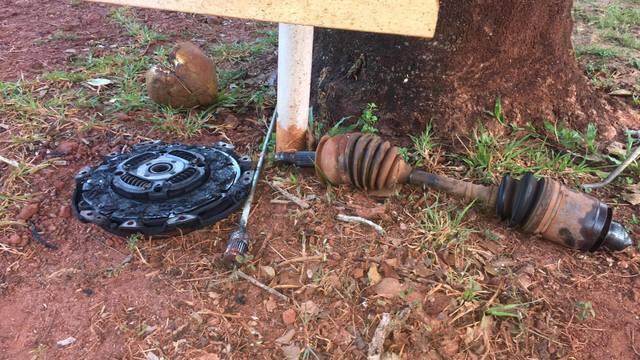
Originally Posted by
PhilipA

The viscous fan PULLS air through the radiator.
If water gets behind it the blades bend forward and hit the radiator.
If you have a bow wave and are going at the correct speed there will be no water high enough in the engine bay to reach behind the fan.
I broke one in one of the creeks north of Twin falls as you had to do a 180 turn and I lost the bow wave. This was in an RRC 3.9 with a 300TDI viscous fan. The 300 TDI fans are good because they are nylon/fibre filled so when the blades break they stay attached to the hub, vs a RRC fan which is just nylon and self destructs. So I didn't lose the radiator and just cut off the approximately opposite blades.
A bra is good but no use if you stop or lose your bow wave.
I wonder how your headlights are after that? My RRC headlights and spots filled with water and I had to empty them out wash them with metho and let them dry in the sun when I did 800MM in Litchfield.
IMHO it's not a great idea to run in deep water as the axles can get water in, the ball joints on a D2 can be destroyed, and if you stop you lose your auto controller, and maybe the BCU. Water to the dash is automatic write off, as told to me by an insurance adjuster I know.
I HATE DEEP WATER
Regards Philip A
According to LR, D2s are good for 500mm stock.
From the DII owners manual:
WADING
The maximum advisable wading depth is
20 inches (0,5 m).
Severe electrical damage may occur if the
vehicle remains stationary for any length of
time when the water level is above the door
sills.
If the depth of water is likely to exceed 20
inches (0,5 m), the following precautions
should be observed:
•Fix a plastic sheet in front of the radiator
grille to prevent water from soaking the
engine and mud from blocking the radiator.
•Remove the CD autochanger*.
•Ensure that the silt bed beneath the water is
free of obstacles and firm enough to
support the vehicle's weight and provide
sufficient traction.
•Ensure that the engine air intake is clear of
the water level.
•Select a low gear and maintain sufficient
throttle to prevent the engine from stalling.
This is particularly important if the exhaust
pipe is under water.
•Drive slowly into the water and accelerate to
a speed which causes a bow wave to form;
then maintain that speed.
At all times, keep all the doors fully closed.
After wading
•Immediately after wading, remove any
protective covering from in front of the
radiator grille.
•Drive the vehicle a short distance and apply
the foot brake to check that the brakes are
fully effective.
•DO NOT rely on the parking brake to hold the
vehicle stationary until the transmission has
thoroughly dried out; in the meantime, leave
the vehicle with the gearbox selector moved
to park (‘P’).
•If the water was particularly muddy, remove
any blockages (mud and leaves) from the
radiator to reduce the risk of overheating.
•If deep water is regularly negotiated, check
all oils for signs of water contamination -
contaminated oil can be identified through
its ‘milky’ appearance. In addition, check the
air filter element for water ingress and
replace if wet - consult a Land Rover dealer
if necessary.
I assume the "severe electrical damage" refers to the location of various modules....
A 2' lift obviously adds 50mm. Everything else would seem to be covered by the various mods most of us have, such as snorkels and breathers.
Even the puddles on the Winter Wombat can be deeper than half a metre. Last year Chris, in his HiLux, and me in the ratty old D1, crossed the river downstream where it was easily up to 50mm below the mirrors. No water anywhere it shouldn't have been, bar in my shoes.
JayTee
Nullus Anxietus
Cancer is gender blind.
2000 D2 TD5 Auto: Tins
1994 D1 300TDi Manual: Dave
1980 SIII Petrol Tray: Doris
OKApotamus #74
Nanocom, D2 TD5 only.



 Reply With Quote
Reply With Quote



Bookmarks